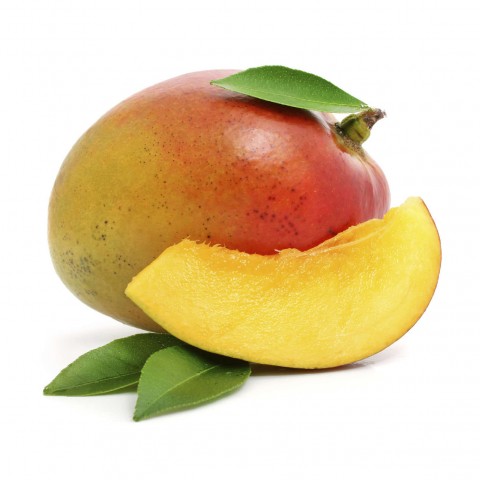
In your Portuguese studies, learning new vocabulary and grammar points is a fundamental aspect of improving your skills. But formal study alone cannot help you develop the linguistic abilities required to put your knowledge into action. Talking to local citizens of Portuguese-speaking countries is the most efficient way to truly acquire the language—and to do that well, you must have a basic understanding of their culture!
Learning about Brazilian culture and traditions will make your time in this beautiful country much more fulfilling and significantly accelerate your language studies!
If we compare language to a beach during a hot summer, then local culture is the ocean that bathes its sand. Sure, you can visit the beach without stepping into the water—but the experience will be far superior when you put the ocean into the equation. If you’ve never been to a beach, for instance, chances are that you would need some time to process and understand the ocean: its sound, its smell, its magnitude…
Similarly, a person is never the same once they get in touch with other cultures, ideas, and values. It’s a personal transformation tool as well as a necessary step in effective language acquisition.
In this lesson, you’ll learn the most relevant Brazilian culture facts and get a clearer picture of what life in Brazil looks like. Let’s get started.
 Table of Contents
Table of Contents
1. Values and Beliefs
In many ways, the Portuguese have influenced the development of Brazilian culture and society.
This influence is most clearly seen in the religious makeup of Brazil today. For instance, the Portuguese have a strong Catholic background which has affected our own views of family, time, and labor. In addition, the Anglo-Saxon cultures have introduced Brazil to Calvinist and Lutheran ideas, though these are not as popular here as Catholicism. This mix of outside religious influences has led to a unique mindset among Brazilians regarding spiritual and sensual topics.
Despite these strong influences, the culture and customs of Brazil do differ from those of Portugal. Brazil officially lost its ‘colony’ status at the beginning of the nineteenth century. With this change in status, Portugal’s direct influence on Brazil diminished and the country has since developed a separate national identity. Today, there are several marked differences between Portuguese and Brazilian culture, most notably in how the two cultures view relationships and day-to-day interactions.
Overall, Brazilians are welcoming and tolerant. In the same vein, informality is one of the central cultural aspects of Brazil. While this doesn’t imply a lack of etiquette in everyday relations, Brazilians do have a more loose and open approach to interacting with others. They also consider it important to show sympathy and humor.
The most problematic Brazilian values and beliefs are linked to social inequality and education.
Our nation’s education system is not doing well: recent data shows that the knowledge of Brazilian students is below the basic level in 68.1% of cases for mathematics and 50.1% of cases for reading. This leads to poor overall communication skills and may even lead to violent practices.
Formal education in Brazil was not available until recently. While universities in Spanish America go as far back as 1538 (Universidad de Santo Domingo), Brazil’s first faculty only appeared in 1808 (Escola de Cirurgia da Bahia) and its first university in 1934 (Universidade de São Paulo).
The press is another thing that didn’t start in Brazil until recently. Latin America’s press started in 1722, but Brazil’s first newspaper dates back to 1808. That year, the arrival of the King of Portugal and his court in Brazil instigated the creation of the press and the first real effort to create cultural institutions within the colony.
Brazil was also the last country in the Americas to abolish slavery, and it failed to properly count this population as citizens. The ramifications of this can still be seen and felt today. Social distinctions and racism are very strong in Brazil, but are different or more veiled than in countries like the USA, for example.
Finally, Brazilians place much importance on one’s looks and personal hygiene. In fact, centuries ago, the indigenous people had a habit of bathing daily. On one hand, these traits promote health and tidiness; on the other, they lead to superficiality.
2. Religions

Most Brazilians are Roman Catholic, but many other religions play an important role in the country.
A key component in understanding Brazilian culture is becoming familiar with its religious makeup and influences.
Christianity (Roman Catholicism in particular) is the common denominator of the Lusophone religious background. Protestant denominations—including Assemblies of God, Jehovah’s Witnesses, and Adventism—have been on the rise for the last 20-something years in many of these countries.
There are noticeable religious differences throughout the Lusophone countries. Portugal is overwhelmingly Roman Catholic. Angola also has a strong Roman Catholic population, but it also features other religions and syncretic cults such as kimbangoism and tocoism. Mozambique’s population is 19% Muslim. And according to data from 2010, Guinea-Bissau’s population was 45% Muslim.
While Brazil is home to a mix of religions, the country is predominantly Christian. The most recent population census (2010) showed:
- 65% Roman Catholic
- 13.4% Neo-charismatic movement
- 9% Evangelical from missions or undetermined
- 8% No religion
- 2% Spiritist
- 2.6% Other
Spiritism and variations of the Afro-Brazilian religion candomblé are examples of expressive cults in the country that aren’t as present in other countries. Candomblé is an African-rooted religion with devotees in Brazil and other South American countries. There is also the Umbanda syncretism: This Brazilian religion was created at the beginning of the twentieth century and blends elements from Christian, Indigenous, and African traditions.
Though not depicted in the census, religions of African origins are very present in some regions of the land. These religions are often practiced by individuals without a strong African background, which is a great example of Brazil’s cultural diversity.
3. Family and Work

Strong family bonds are a trademark of Brazilian people.
A- Family
Within Brazilian families, there is a strong sense of hierarchy. Children are expected to obey and respect their parents, for example. Men and women have more defined roles here than in most Western countries, yet this has been changing since the acute industrialization process of the 1970s.
Here are some more facts about the Brazilian family structure:
- Brazil ruled same-sex marriage legal in 2011.
- Single-mother families compose just under 20% of Brazilian families.
- Nowadays, families are not very big. (Two generations ago, couples were expected to have many children.)
Another aspect of Brazilian culture that might seem odd to foreigners is that adults often live with their parents. This is common for two reasons:
1) A large part of the population has low income.
2) There is a strong link between relatives.
Sometimes, relatives outside of one’s nuclear family—or even people who are not blood-related, but close to the family—live together. This custom began a long time ago, and was already depicted in the writings of nineteenth century author Machado de Assis, for instance.
B- Work
If you plan on working in Brazil, there are a few things to know about Brazilian culture in business and work settings.
There is a strong sense of hierarchy between boss and employee. Open criticism and confrontation in the workplace is usually not welcome: people tend to be indirect and “friendly” when commenting on others’ actions and ideas. Also, while Brazilians are often hard-working, the importance of work and entrepreneurship is tied more to survival than to one’s moral existence.
Informal communication is common in the workplace. Doing business in Brazil often involves spending time and eating meals with the other party and engaging in trivial conversations before closing the deal. Workplace clothing is typically formal, though there are exceptions.
- → Do you want to work in Brazil? Great! You can check out our article on How to Find Jobs in Brazil to get a head start!
4. Art

Antônio Carlos “Tom” Jobim: the father of bossa nova is a Brazilian artistic icon.
Brazilian culture values modernist, contemporary, and urban arts, as well as literature. Jorge Amado, Paulo Coelho, Monteiro Lobato, Carlos Drummond de Andrade, and Clarice Lispector are some of the most famous authors. Popular names in the plastic arts include Romero Britto, Tarsila do Amaral, Alfredo Volpi, Vik Muniz, and Cândido Portinari.
Many Brazilians also appreciate Baroque art, which is inherently linked to both the religious use of art in the country and our traditional architecture. Antônio Francisco Lisboa, a.k.a. Aleijadinho (“Little Crip”), is one of the major Baroque icons. Indigenous art also resonates with a lot of people: patterns, war bonnets, bows, rattles, and wind instruments are some of its most accessible expressions.
There’s also an immense taste for handicraft, sculptures, art naïf, and cordel poetry. Cordel, for instance, are poetic accounts sold in the form of leaflets. These poetry books can be over sixty pages long, and they blend mythical and daily themes with humor and drama in a lyrical manner. Traditional artists from the Northeast have a lot to offer in this area.
On the same note, Brazil is also a land of many musical rhythms. Samba became the most popular of them in the twentieth century, even though it began as a marginalized form of music associated with poor people. It can assume different expressions, such as syncopated, calm, frenetic, instrumental, or vocalized.
Axé is another famous example of Brazilian rhythm. It was conceived in the 1980s by merging elements of samba-reggae, pop rock, and other local genres to create a vibrant type of music. This musical style is especially popular during Carnival. The country is home to many other interesting rhythms as well, such as moda de viola, forró, and frevo.
Brazil has local variations of rock, pop, rap, and electronica. Some of the most respected Brazilian musicians in these genres include Carlos Gomes, Heitor Villa-Lobos, João Gilberto, and Antônio Carlos Jobim. Modern musical options in Brazil’s entertainment culture range from Sepultura to Olodum—two radically different styles, yet distinctly authentic with external influences.
Our cinema production is relatively strong. While Brazilian cinematic releases are regularly being awarded internationally, they’re not usually very popular in-country. Brazilians are more interested in TV productions and, recently, digital films. Unfortunately, theatrical productions are pretty hard to come by. If you want to see a good play or opera, there are traditional state-funded theatres in some of the country’s biggest cities.
5. Food

The miraculous mango is just one sample of the many fruits available in Brazil.
Getting a taste of Brazilian food culture is an excellent introduction to the culture as a whole. The continental proportions of the country, its tropical characteristics, and its good weather conditions make Brazil one of the biggest places of food production in the world. It is known for its abundance of meat (poultry, beef, and pork), a huge variety of fish, grains, fruits, and fresh vegetables.
We have a rich gastronomy: Our traditional cuisine blends Portuguese, native (indigenous), and African elements. A few of our most popular food items include:
- Feijoada
- Angu
- Moqueca
- Acarajé
- Cuscuz
- Charque
- Manioc flour
- Chicken
- Okra
- Tapioca
Now it’s time for dessert! We recommend you try:
- Rapadura
- Guava jam
- Mungunzá
- Milk pudding
- Quindim
Since the beginning of the twentieth century, many other cultures have influenced our national food options. To give you an idea, a foreigner could find food from Italian, Spanish, German, Japanese, Arab, and Hebrew origins.
- → Ready to try some delicious Portuguese food for yourself? Then you’re going to need our list of the Most Useful Phrases and Vocabulary for Ordering Food in Portuguese!
6. Traditional Holidays
In Brazilian culture, holidays are an essential aspect of life and reflect the people’s open, sociable nature as well as their religious views. Here’s an overview of the most important Brazilian holidays.
A- New Year
Huge parties welcome the new year in Brazil, also known as Réveillon. The beaches are filled with tourists, while middle-sized and big cities organize musical and cultural spectacles.
B- Carnival
Carnival used to be a very traditional national street and ballroom celebration, but the holiday was deeply changed by samba. Samba was a marginalized rhythm sung mostly by black populations at the dawn of the twentieth century. By the 1940s, it had become so popular that it was elevated to national symbol status during Getúlio Vargas’s dictatorship.
Nowadays, Carnival is celebrated with sambadromes and street parades, accompanied by a variety of musical rhythms. Meanwhile, the country virtually stops for four days. The most famous celebrations take place in the cities of Recife, Salvador, and Rio de Janeiro.
C- Our Lady of Aparecida
This is the one of the biggest religious holidays in the country. Pilgrimage sites are filled and people devote their prayers to Our Lady of Aparecida, an image of the Holy Virgin that was found in the form of a statue in the Paraíba River in the eighteenth century. Even today, this black Madonna is associated with many miracles across the country.
Civic holidays:
- Tiradentes (April 2)
- Day of Discovery (April 22)
- Independence Day (September 7)
- Proclamation of the Republic (November 15)
7. Conclusion
Becoming familiar with the basics of Brazilian society and culture is an important part of your language studies. And studying with PortuguesePod101 is the most effective way to learn about Brazilian culture alongside the Portuguese language!
We offer a range of learning materials, including grammar lessons, word lists, and video lessons for learners at every level. It doesn’t take much to get started with our fun and engaging lessons. Just sign up on PortuguesePod101.com today, and you’ll start noticing progress in no time.
Before you go, let us know in the comments how Brazil’s culture compares to that in your country. We look forward to hearing your thoughts.
Happy learning!










